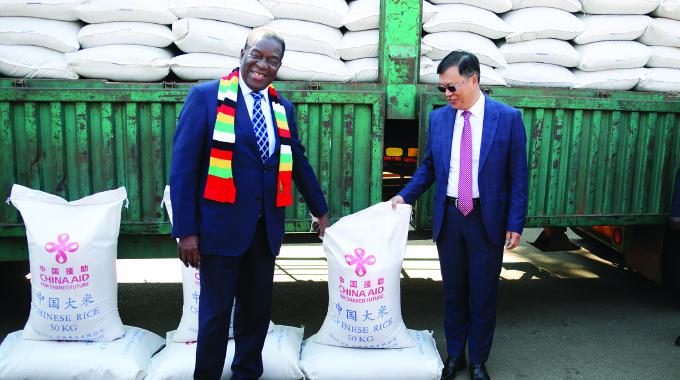News / National
Food aid demand to rise until December in Zimbabwe
3 hrs ago | Views

The demand for food assistance in Zimbabwe is expected to rise steadily until at least December, with households in the country's typical deficit-producing areas projected to exhaust their own-produced food stocks by then, according to the Famine Early Warning Systems Network (Fews Net).
The US-based food security monitoring agency said the current situation is the result of poor 2024/25 harvests caused by a historic dry spell that has worsened food insecurity in the country's drought-prone regions.
Droughts in Zimbabwe have become more frequent and severe in recent years, leading to widespread crop failure, water shortages, and declining agricultural output. Changing rainfall patterns have disrupted farming cycles, further threatening rural livelihoods and food production.
In its latest assessment, Fews Net warned that market access for food will likely become more difficult for low-income households in late 2025.
"Households in some districts within typical deficit-producing areas are expected to exhaust own-produced food stocks by December," the report said.
"In these areas, poor households will likely face decreased access to market foods in late 2025. Food assistance needs are expected to steadily increase through at least December, though the needs are likely to be significantly lower than last year and trend at near-normal levels."
Fews Net forecasts that the 2025–26 lean season will start later than usual in most areas as household food stocks are expected to last longer due to an improved 2025 harvest.
The report projects a 290% increase in food crop production in 2025 compared to last year, boosting household access to locally produced food. Falling maize prices are also expected to improve affordability for poor households.
Maize grain prices in July 2025 were significantly lower than the same month last year, with prices at Harare's Mbare Market down by 40%. Rural markets in both surplus and deficit areas reported price drops of between 40% and 55% over the same period.
"The lower-than-last-year and near-normal price trend is expected to continue through December 2025," the report noted.
Despite these positive price trends, food insecurity remains a significant concern. Current estimates indicate that more than six million Zimbabweans are food insecure, with around 2.6 million also facing water insecurity.
The US-based food security monitoring agency said the current situation is the result of poor 2024/25 harvests caused by a historic dry spell that has worsened food insecurity in the country's drought-prone regions.
Droughts in Zimbabwe have become more frequent and severe in recent years, leading to widespread crop failure, water shortages, and declining agricultural output. Changing rainfall patterns have disrupted farming cycles, further threatening rural livelihoods and food production.
In its latest assessment, Fews Net warned that market access for food will likely become more difficult for low-income households in late 2025.
"Households in some districts within typical deficit-producing areas are expected to exhaust own-produced food stocks by December," the report said.
"In these areas, poor households will likely face decreased access to market foods in late 2025. Food assistance needs are expected to steadily increase through at least December, though the needs are likely to be significantly lower than last year and trend at near-normal levels."
Fews Net forecasts that the 2025–26 lean season will start later than usual in most areas as household food stocks are expected to last longer due to an improved 2025 harvest.
The report projects a 290% increase in food crop production in 2025 compared to last year, boosting household access to locally produced food. Falling maize prices are also expected to improve affordability for poor households.
Maize grain prices in July 2025 were significantly lower than the same month last year, with prices at Harare's Mbare Market down by 40%. Rural markets in both surplus and deficit areas reported price drops of between 40% and 55% over the same period.
"The lower-than-last-year and near-normal price trend is expected to continue through December 2025," the report noted.
Despite these positive price trends, food insecurity remains a significant concern. Current estimates indicate that more than six million Zimbabweans are food insecure, with around 2.6 million also facing water insecurity.
Source - Newsday



































